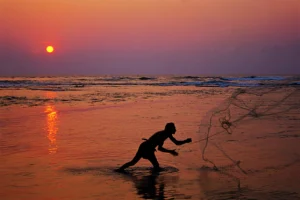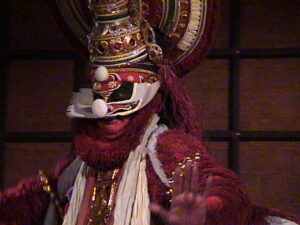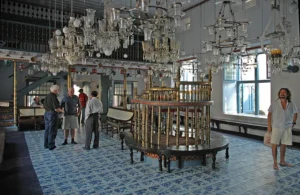Cochin/Kochi
Cochin/Kochi (Ernakulam): It is believed that spices originated from Cochin were presented to King Solomon by the Queen of Sheba.

In 1000 BC Phoenicians, trading with Cochin, supplied the Pharaohs of Egypt with aromatic oils and spices which were used to preserve the embalmed bodies of the Egyptian Kings and Queens. After Rome conquered Egypt, the Roman galleys were carrying goods to imperial Rome where pepper, the most prized import, was worth its weight in gold.
St. Thomas arrived in the first century AD. bringing Christianity to these shores and established Christian Communities here even before Rome.
The Jews arriving here in the wake of the Diaspora were given sanctuary and titles of land and established a flourishing trading community in Cochin.
For the next thousand years the spice trade was controlled by the Arabs who supplied these exotic wares through the Italian City State of Venice. Marco Polo in his travelogue writes about a flourishing trade between Cochin and China when he visited these parts.
In order to break the Venetian stranglehold on this lucrative trade, the Catholic Majesties of Spain and Portugal financed independent explorations to discover a direct sea route to Cochin.
Christopher Columbus under the patronage of King Ferdinand and Queen Isabella of Spain began his journey by sea to Cochin; but eventually discovered the continent of the Americas. Vasco da Gama, the Portuguese explorer (1498) directly established, for the first time, a sea route between western Europe and the Orient.
The Dutch in their quest for colonial expansion fought the Portuguese in a major sea battle in the Harbor of Cochin and established a Dutch trading port. In the 18th century, Cochin came under the British rule and became an integral part of their empire. Being naturally blessed with an all weather harbor it soon became the premier port and commercial hub of South India.
Visit the Mattancherry Dutch Palace, built by the Portuguese in 1555 and renovated by the Dutch in 1663. In the ancient rooms are 17th century murals that relate in vibrant color the story of the epic Ramayana. See streets of picture-postcard houses out of another age, in 17th century Dutch and traditional Kerala styles. Visit St. Francis Church, the oldest European Church in India. It has several antiquities including a wealth of records. These include a palm-leaf title deed the local Raja gave the Portuguese in 1503. See the Chinese Fishing Nets, unique to this part of Kerala and living symbols of a centuries-old Chinese influence on this coast.
 In Cochin we will visit the Jew Town and the paradesi Synagogue which was built in 1568. This is the first Synagogue that came into existence in the Commonwealth and is also one of the oldest in the world. This Synagogue was built by Samuel Castiel, David Belila, Ephrahim Sala and Joseph Levi. It stands on the grounds of Maharaja of Cohin’s residence overlooking the Hindu Shrine demonstrating cordial relations of the Jews with the people of Kerala. In addition, we will visit some important Hindu religious sites.
In Cochin we will visit the Jew Town and the paradesi Synagogue which was built in 1568. This is the first Synagogue that came into existence in the Commonwealth and is also one of the oldest in the world. This Synagogue was built by Samuel Castiel, David Belila, Ephrahim Sala and Joseph Levi. It stands on the grounds of Maharaja of Cohin’s residence overlooking the Hindu Shrine demonstrating cordial relations of the Jews with the people of Kerala. In addition, we will visit some important Hindu religious sites.
Is this a major historical and demographic period? See the BBC article.
